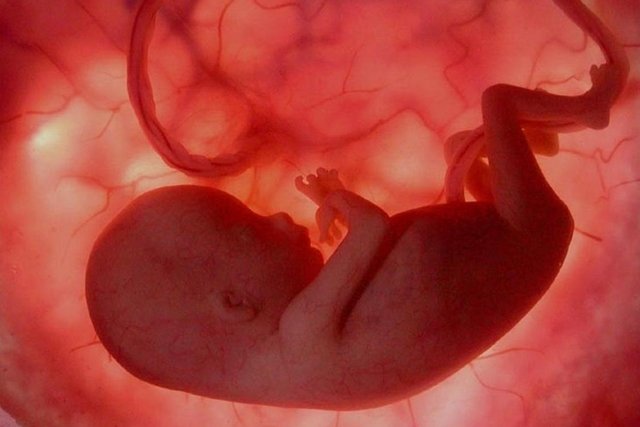Fetal distress is when the baby does not receive enough oxygen, in the womb or during birth, which can directly interfere with its growth and development.
This situation must be identified by the obstetrician during ultrasound examinations, where it is possible to observe some signs indicating fetal distress, such as a decrease or change in the fetal heartbeat, a decrease in fetal movements and a decrease in the volume of amniotic fluid, for example. .
It is important that fetal distress is identified and treated according to the obstetrician’s guidance, to prevent complications for the baby, such as paralysis and heart disease, in addition to a greater risk of miscarriage. Therefore, it is essential to go to all prenatal appointments to carry out the necessary tests and ensure that the baby is developing correctly.

Signs and symptoms of fetal distress
The main signs and symptoms of fetal distress are:
1. Decreased fetal movements
A baby’s movements in the womb are an important indicator of its health and, therefore, a decrease in the frequency or intensity of movements can be an important sign of a lack of oxygen. Therefore, if there is a decrease in the baby’s movements, it is important to go to the obstetrician to do an ultrasound and identify if there is a problem that needs to be treated.
2. Vaginal bleeding
Small bleeding throughout pregnancy is normal and does not mean that something is wrong with the pregnancy, however, if there is heavy bleeding it could mean that there is some change in the placenta and, therefore, a decrease in oxygen levels to the baby can occur. baby. In these cases, you should go to the hospital immediately because bleeding can also be a sign of a miscarriage, especially if it happens in the first 20 weeks.
3. Presence of meconium in the water bag
The presence of meconium in the water when your water breaks is a common sign of fetal distress during labor. Generally, amniotic fluid is clear with a yellowish or pinkish tinge, but if it is brown or greenish, it may indicate that the baby is in fetal distress.
4. Severe abdominal cramps
Although cramps are a very common symptom during pregnancy, mainly because the uterus is changing and the muscles are adapting, when a very intense cramp appears that also causes back pain, it may indicate that there is a problem with the placenta and, therefore, the baby may be getting less oxygen.
Causes fetal distress
The most common causes that can reduce the amount of oxygen reaching the fetus and produce fetal distress are:
- Placental abruption;
- Compression of the umbilical cord;
- Baby infection;
- Gestational diabetes;
- Pre eclampsia.
Furthermore, fetal distress can occur in women who have changes in the uterus that can interfere with the baby’s development during pregnancy. Therefore, it is important that pregnancy monitoring is carried out in accordance with the guidance of the obstetrician-gynecologist so that complications can be prevented.
What to do in case of fetal distress
If fetal distress is suspected, due to the presence of one or more signs, it is important to go immediately to the emergency room or to an obstetrician, to assess the problem that may be causing the decrease in oxygen and begin appropriate treatment.
Most of the time, the pregnant woman may need to be hospitalized for a few hours or days, so that medications can be administered directly into the vein and the baby’s health can be continuously assessed.
In more serious cases, where there is no improvement in fetal distress, it may be necessary to deliver prematurely. If the birth process has already started, the baby can be born vaginally, but in many cases it is necessary to have a cesarean section.

Sign up for our newsletter and stay up to date with exclusive news
that can transform your routine!
Warning: Undefined array key "title" in /home/storelat/public_html/wp-content/plugins/link-whisper-premium/templates/frontend/related-posts.php on line 12
Warning: Undefined array key "title_tag" in /home/storelat/public_html/wp-content/plugins/link-whisper-premium/templates/frontend/related-posts.php on line 13



